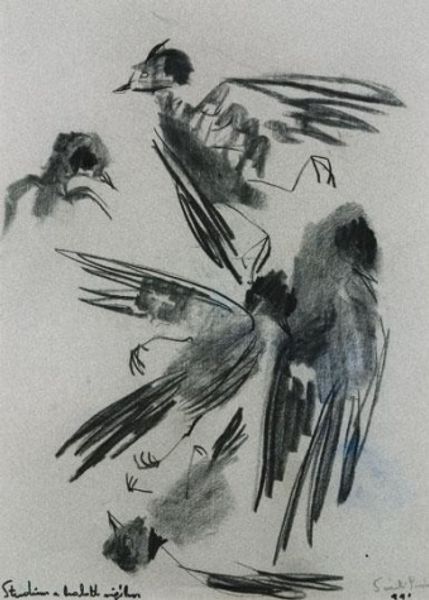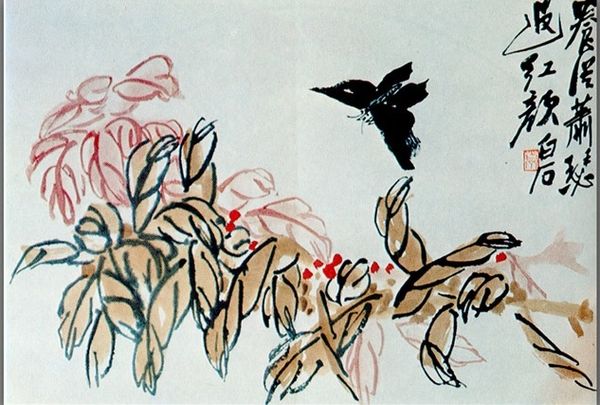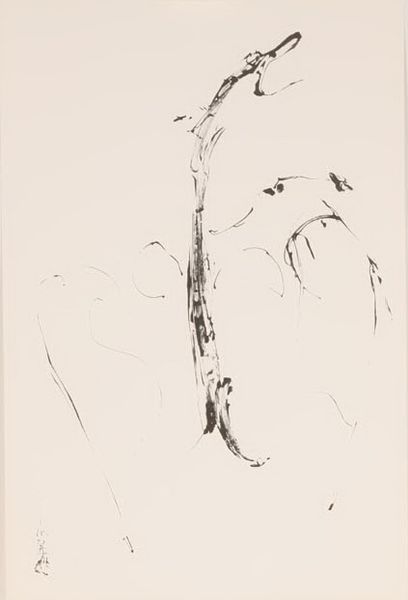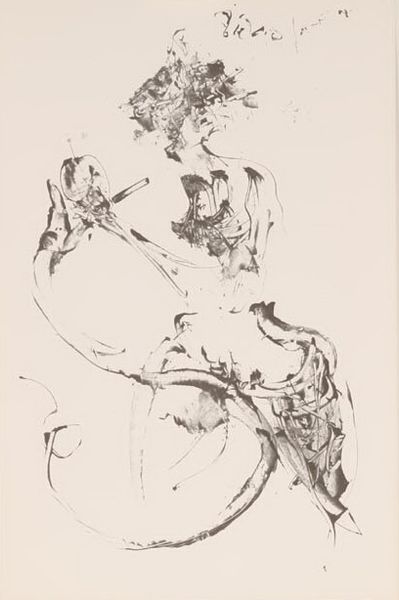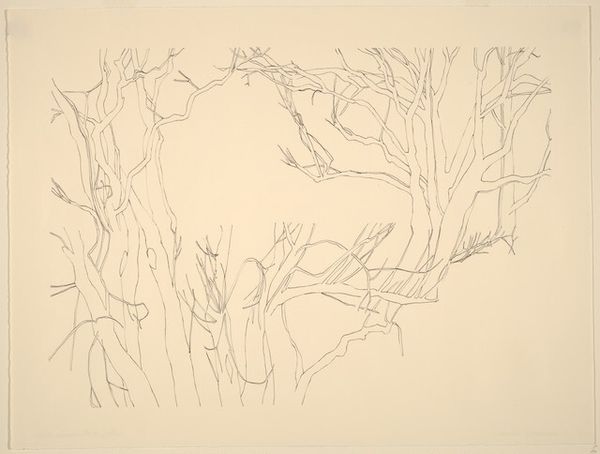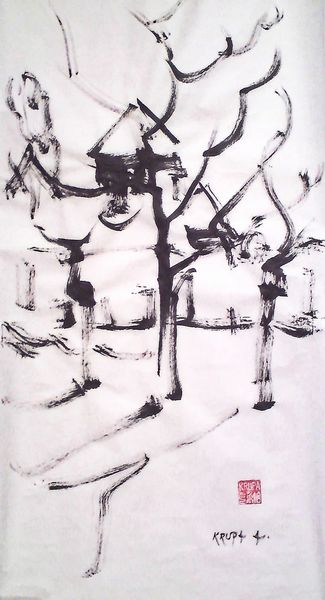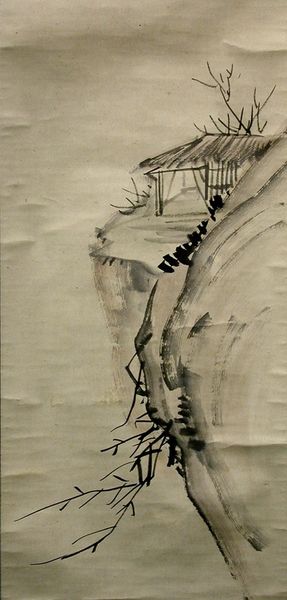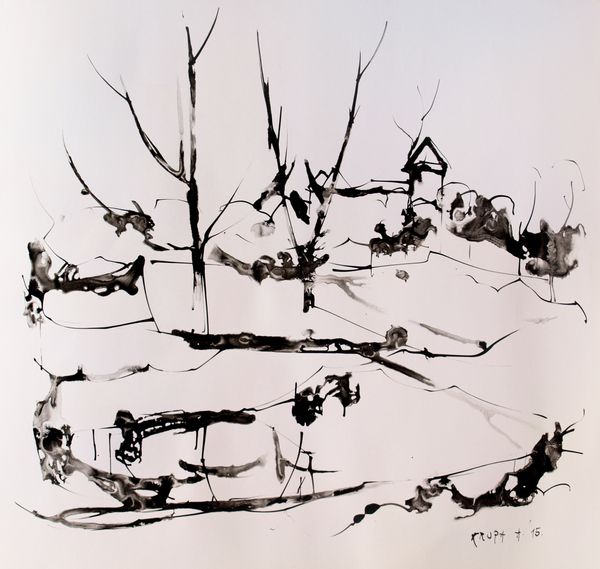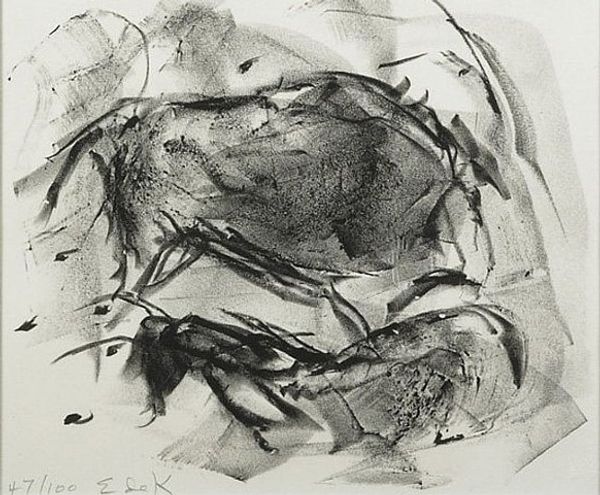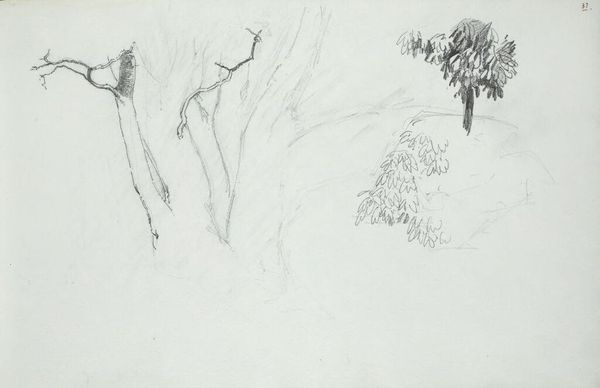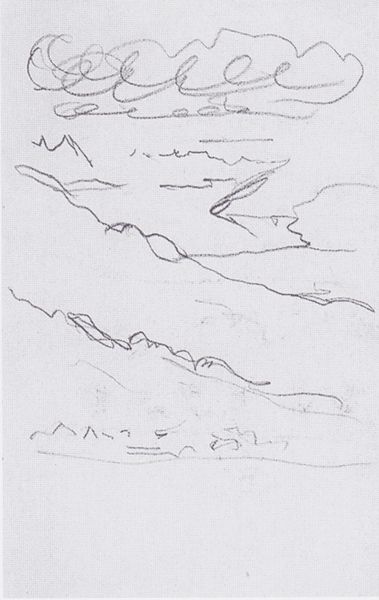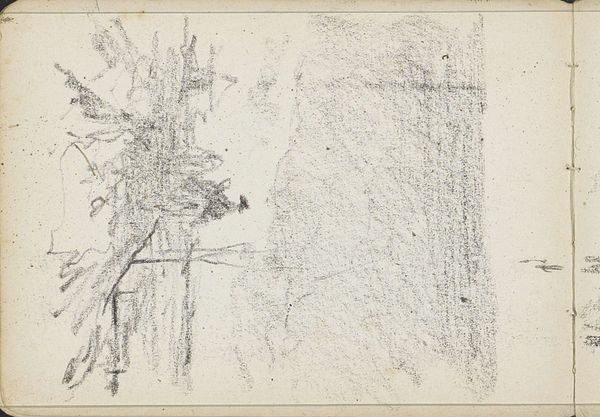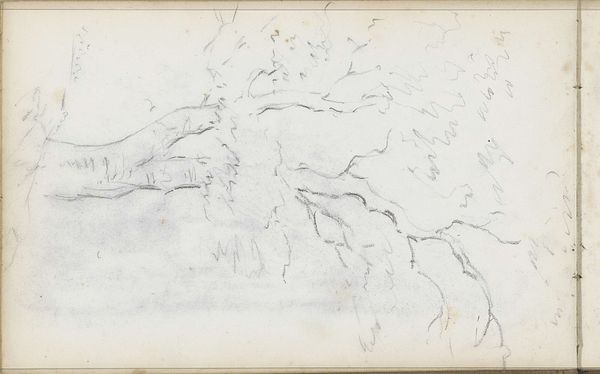
drawing, ink
#
tree
#
drawing
#
cliff
#
organic
#
pen drawing
#
pen illustration
#
pen sketch
#
landscape
#
ink line art
#
linework heavy
#
organic drawing style
#
ink
#
rock
#
ink drawing experimentation
#
sketch
#
pen-ink sketch
#
thin linework
#
line
#
pen work
#
botany
#
realism
Copyright: Eyvind Earle,Fair Use
Editor: This is Eyvind Earle's "Hillside" from 1995, rendered in ink. It's really striking how he's used such delicate linework to create this sense of vast space. It almost feels like an imaginary, serene landscape. What's your take on this piece? Curator: Earle's artistic trajectory is quite fascinating when considered through a historical lens. He gained recognition for his background paintings in Disney films like "Sleeping Beauty," which certainly informed his later works. There, his landscapes weren’t just backgrounds but crucial elements shaping the narrative. In "Hillside," consider the lack of figures. Does this absence enhance or diminish the viewing experience for a 20th-century audience used to landscape paintings filled with symbolism of progress or human intervention? Editor: That’s a great point about the Disney connection. It definitely makes me think about how these idyllic landscapes were being presented to the public. But, if there aren't figures or overt symbols, does this remove the opportunity to explore how societal forces are portrayed? Curator: Not necessarily. The very act of depicting a pristine, untouched landscape can be a powerful statement. Earle made this piece toward the end of the twentieth century, in a period of rising ecological consciousness. Could this emphasis on untouched nature, devoid of human presence, be read as a subtle commentary on industrialization and environmental responsibility, considering that such views are very much filtered and created to promote a type of art for the American home? Editor: That gives me a completely different perspective. I hadn't thought about it as a reflection of those larger anxieties or movements at that time, or even a political statement, consciously or not. Curator: Exactly! It demonstrates how even seemingly simple landscape art can be a rich source for understanding broader cultural values and concerns. Editor: It’s amazing how understanding the context unlocks so many layers within what initially appeared as a straightforward, pretty drawing. Thanks for pointing that out! Curator: My pleasure! It’s those hidden dimensions that make art history so rewarding.
Comments
No comments
Be the first to comment and join the conversation on the ultimate creative platform.
